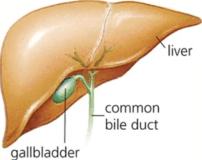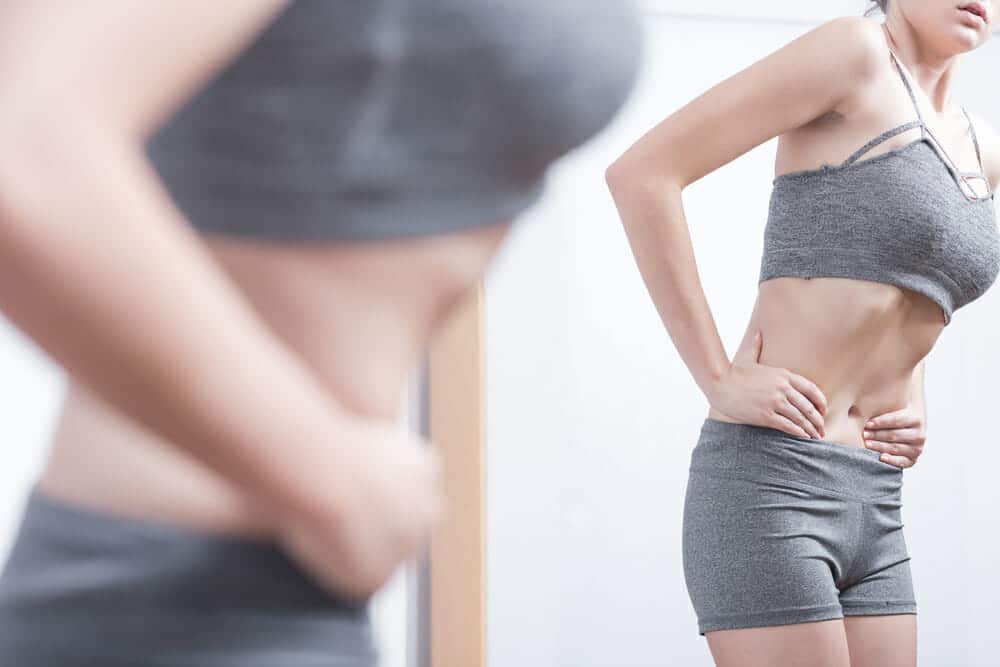The gallbladder is a small sac that lies just under the liver. Its main purpose is to store the bile, or a liquid made by the liver that helps you dissolve fats. Bile travels from the gallbladder through the cystic duct and the common bile duct and is secreted into the small intestine to help you digest your food.

Gallstones
Gallstones are solid materials that form in the gallbladder. Cholesterol and pigment in the bile form hard particles and ” “stones” can be small or almost as large as your finger. Two types of gallstones are cholesterol stones or pigment stones. Cholesterol stones are generally yellowish and are the main stones that cause problems. Your gallbladder can also form pigment stones that are small and dark and are made up of bilirubin or the pigments that are produced when heme breaks down. A as note, heme is a by-product of the breakdown of red blood cells.
Gallstones can be cause by genetics, body weight, a diseased gallbladder or diet. Gallstones form when the substances that make up bile are out of balance or the gallbladder fails to empty properly.
- If family member has gallstones, you are at risk of developing stones.
- One of the biggest risk factors is obesity. A rise in cholesterol plus fat squeezing the gallbladder will contribute to stones.
- Estrogen can also cause an increase in cholesterol and reduced motility. Watch out if you are pregnant; take birth control pills or hormone replacements. These donate to gallstones.
- For some reason Native Americans and Mexican-Americans are more likely to develop gallstones that Caucasians.
- Women tend to have gallstones more than men.
- Cholesterol lowering drugs tend to increase the amount of cholesterol in bile which in turn provides a risk for gallstone formation.
- If you have diabetes you generally have high levels of triglycerides or blood fats plus gallstone risk.
- Dieting or rapid weight loss causes the liver to secrete cholesterol. This leads to gallstones. Fasting also reduces gallbladder contractions which causes stones.
Gallbladder Disease Symptoms
Gallstones themselves do not cause symptoms. Where these little stones cause problems is when the gallbladder tries to empty and the stones prevent draining. Symptoms can be:
- Pain in the upper abdomen and back that lasts for several hours.
- Nausea.
- Vomiting.
- Bloating, indigestion and heartburn plus uncontrollable gas.
Diagnosis

Treatment
To treat gallstones, the gallbladder is usually surgically removed. Laparoscopic cholecystectomy is the preferred method and involves a light and a camera passed through small incisions in the abdomen. The surgeon will ” “watch” the camera move through a video monitor and he/she is then able to remove the offending gland through one of the small incisions.
Open cholecystectomy is somewhat more invasive. Incisions are made in the abdomen, the gallbladder extracted and stiches used to sew up your abdomen. After this type of gallbladder surgery you will be required to stay in the hospital for a few days.
Non-surgical treatments for gallstones include the medications Actigall or Chenix. These dissolve cholesterol stones. Diarrhea is a side effect, but if stones are small this is a preferred method. You will need to use these medications for years to completely dissolve gallstones and keep them from coming back. Do be warned that gallstones will return if you stop using either Actigall of Chenix.







